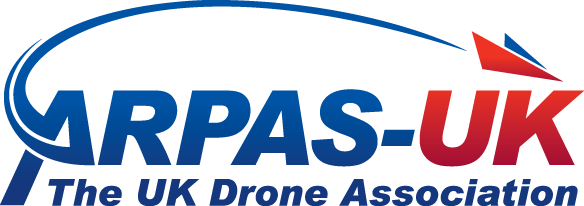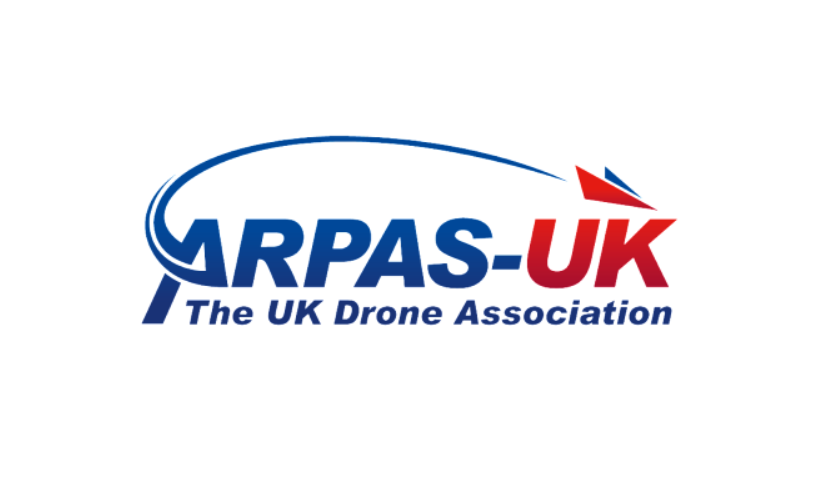15 May 2025 – The Civil Aviation Authority (CAA) published on 8 May 2025 CAP3105, setting out its recommendations to the Department for Transport (DfT) following the 2023 consultation on the UK UAS Regulation Review (CAP2610).
These recommendations are significant as they clarify the regulatory framework for the Open Category once the transition period ends on 1 January 2026. This comes at a time when the UK Government is aiming to simplify regulations to support growth—where safely possible—and as the industry benefits from two to three years of operational experience across Europe.
CAP3105 summary & Implications for the UK Drone Industry
ARPAS-UK welcomes the intent to simplify and expand operations in the Open Category. Overall, the recommendations are proportionate and aligned with fostering sustainable growth.
The proposed expansion of the Open Category represents a significant opportunity for industry growth. At present, the A1 and A2 subcategories offer limited practical value due to their restrictive operational criteria. By introducing class marking, which provides a level of assurance regarding a UAS’s robustness and safety, these constraints can be meaningfully eased.
However, we highlight two areas of concern that we believe warrant further discussion with industry stakeholders:
- The adequacy of remote pilot training, particularly in A1 and A2 subcategories
- Unaddressed issues related to Remote ID raised during the 2023 consultation
If implemented as outlined in CAP3105, we anticipate that many current PDRA01 holders operating in the Specific Category may find the revised A1 and A2 framework a simpler and more efficient regulatory pathway for routine operations. This shift would reduce administrative burdens, increase operational flexibility, and enable more agile commercial drone services within the Open Category.
UK Class Marking would begin as soon as January 2026, initially using EU Class Marking, then transitioning to UK Class Marking only from Jan 2028
The CAA recommends the formal introduction of UK-specific class markings: UK0, UK1, UK2, etc. These will serve as the national standard for identifying UAS that meet defined design and performance requirements. The CAA would play its new role as the UK Market Surveillance Authority, and validate UK Class marking.
- Transition Period: From 1 January 2026 to 1 January 2028, drones marked with EITHER EU class labels (C0, C1, C2, etc.) OR UK-marked drones would be seamlessly accepted within the UK Open Category.
- From 1 January 2028, only UK-class marked drones will be permitted in the Open Category.
The CAA may diverge from EASA Class Marking over time, but in absence of major divergence, EU class marked drones should be reviewed swiftly by the CAA and receive UKx class marking.
Clarification of Open Category Subcategories labels to ‘Over people’ (A1), ‘Near people’ (A2), and ‘Far from people’ (A3)
To enhance clarity for UAS operators—particularly newcomers—CAP3105 introduces more intuitive labels for Open Category subcategories:
- A1: “Over People” — Will allow overflight using EU1/UK1 drones weighing <900g. This is a notable expansion from the current 500g threshold and will include a broader range of commercial off-the-shelf (COTS) drones.
- A2: “Near People” — Will allow operation within 30m of uninvolved people, reduced to 5m with low-speed mode activated, using EU2/UK2 drones <4kg. The current 2kg limit and lack of proximity flexibility have made A2 operations impractical in many urban environments. The new criteria mark a substantial improvement.
- A3: “Far from People” — Minimum distance from individual buildings is reduced from 150m to 50m, facilitating operations in less densely populated areas.
>>> Area of Concern 1: Training adequacy
During the 2023 consultation, concerns around remote pilot training were not widely prioritised. We welcome the ability to fly over uninvolved people in A1 with a <900g drone, but is the FlyerID online training still adequate? Similarly, is the current A2 CoC training – which can be completed with a one-day online course – still adequate training when flying 5m away from uninvolved people with a 4kg drone? The A2CoC certificate is valid for 5 years. Does a five-year validation period still reflect best practice, given the pace of technological and regulatory change?
While we acknowledge there have been few/no? reported incidents in Europe, this major change is an opportunity to further improve education and enhance professionalism in the open category.
>>> Area of Concern 2: Remote ID — Unresolved Issues
Remote ID is the ability of a UAS to communicate identification and location information during flight. Remote ID will make it possible to differentiate between legitimate UAS operators and those misusing UAS, enabling more effective enforcement and deterrence.
CAP3105 recommends implementing Remote Identification (Remote ID) for drones in the Open Category. The preferred model is Hybrid RID, combining direct broadcast and network-based identification via mobile networks. However, since Network RID is not yet available and/or costly, the interim solution is Direct Remote ID.
ARPAS-UK agrees that Remote ID is essential for law enforcement and public trust. Yet, we remain concerned that CAP3105 does not address issues we raised during the 2023 consultation, including:
- Funding: Will the Home Office support the infrastructure rollout?
- Data Access: Who will have access to RID information? We stress that this should be limited to authorised enforcement agencies, and compliant with GDPR.
- Just Culture: It must be clear how RID data will be used, ensuring it does not undermine the principles of fairness and trust within the aviation community.
Direct RID is known to be easily circumvented, raising questions about its effectiveness. Still, we agree that the industry must take initial steps toward responsible and enforceable UAS operations, especially as one incident can compromise the community’s livelihood.
We will seek return of experience from the USA and Europe on the matter, and seek further dialogue with key stakeholders on this issue, to understand the response to our concerns.
Introduction of Geoawareness
CAP3105 recommends the introduction of geoawareness as part of Class Marking
- From 1st January 2026, geo-awareness will be implemented only for UK1, UK2 and UK3 UAS
- From 1st January 2028, geo-awareness will also be required for UK0 UAS with cameras weighing 100g or more.
- The geo-awareness requirements for UK5 and UK6 UAS will continue to be optional.
- UK4 UAS, legacy UAS and privately built UAS will remain out of scope.
As this functionality is already present in most COTS drones with EU class marking, ARPAS-UK had expressed its support in 2023 for its introduction.
Visual Distinction in Night Operations
Strobes used for night flying should be reconsidered to ensure they are visually distinct from those used on crewed aircraft. Recent incidents in New Jersey and New York highlight the risk of confusion, where drones were mistaken for crewed aircraft. Using different colours or patterns could help prevent such misidentification and improve situational awareness for all airspace users.
CAP3105 legislative process – What happens next?
The Department for Transport (DfT) will now consider whether to adopt the CAA’s proposed changes. Should the DfT decide to proceed, the necessary amendments to existing regulations will be enacted via a statutory instrument.
It is important to note that the timeline for this legislative process remains uncertain, as it will depend on the DfT’s internal priorities and the broader government legislative agenda.
About ARPAS-UK
ARPAS-UK is a Non-Profit Trade Association founded in 2013, empowering the UK drone Industry. Our objective is to accelerate the safe and professional adoption of drones across all industries, unlocking transformative for the economy and wider society.
We engage with a broad range of stakeholders with a fair and balanced approach, we foster a collaborative approach across the ecosystem. We advocate respect, inclusiveness and politeness in exchanges, and request professionalism within its membership through compliance with an agreed Code of Conduct.
More Regulation related webposts:
- Regulatory Matters – News Repository – ARPAS UK
- ARPAS-UK Regulation SIG news / positions / work / responses to consultations – ARPAS UK
15 May 2025


